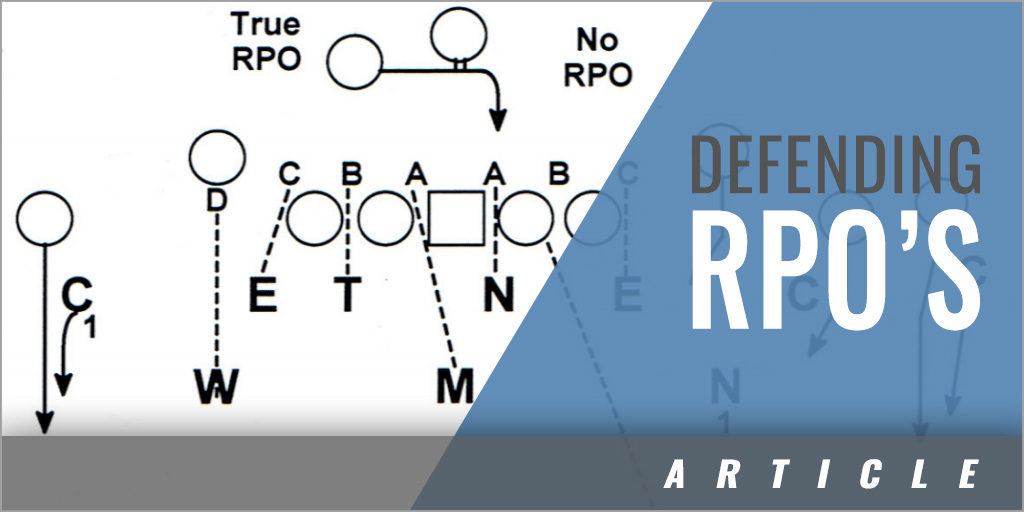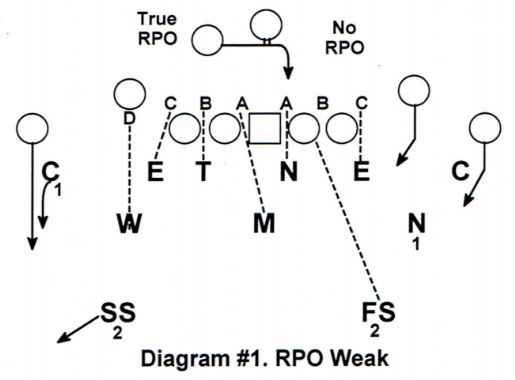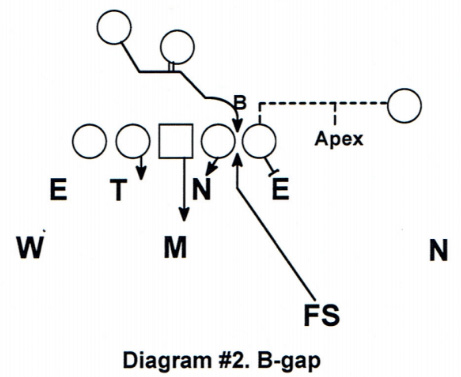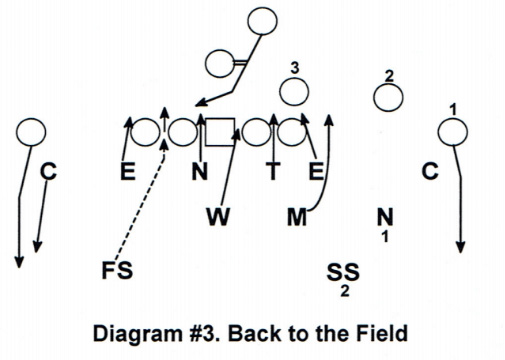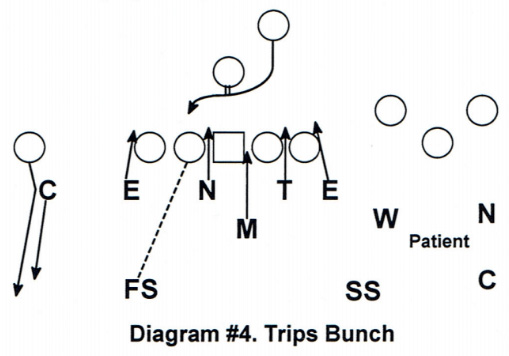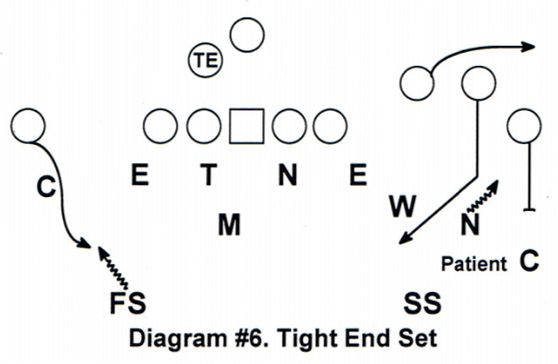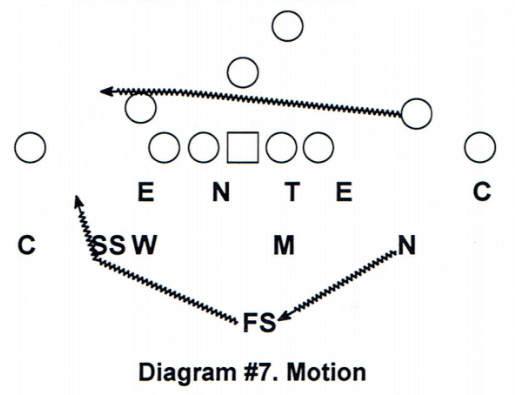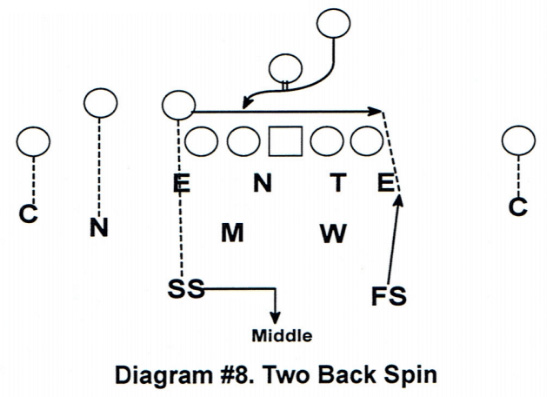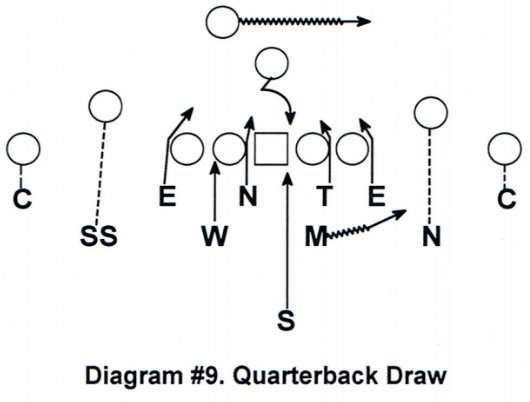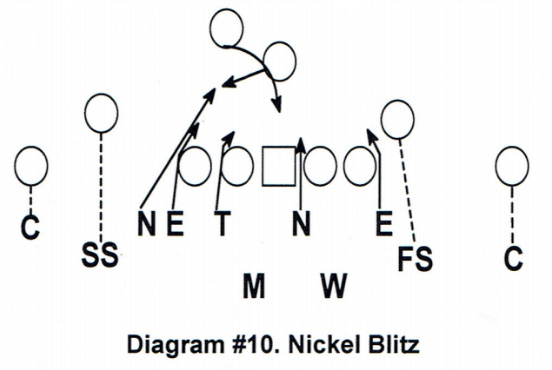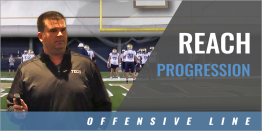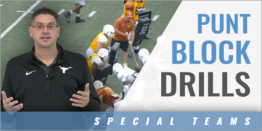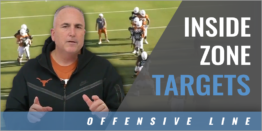|
By: Matt Guerrieri - Duke University Originally published in: 2018 Nike Coach of the Year Clinic Manual - by Earl Browning Provided by: Nike Coach of the Year Thank you, I appreciate being here today. It is a pleasure to be here and talk with you guys. I appreciate you guys taking time out of your day to listen. I am ready to talk a little ball because that is what I love to do. I do not want this to be a lecture. You can stop me at any time to ask questions. I am sure I can learn as much from you as you can from me. Our philosophy is to go from "young men to grown men." That is really important to us. When a guy leaves our program he gets a hug from his father and a great degree. You are coaching children and turning them into young men. The kids can go one of two ways. My high school coach shaped so much of my future. He is why I am coaching today. I appreciate what you guys do and it matters when we get players from a great program, they already have the background for what we want to teach. I appreciate what you guys do. It does not matter what level of football you watch. It could be pros, college, or high school, everyone is talking about RPO's. We watched Wake Forest scoring touchdown after touchdown and it is all RPO's. Our team is a huge 11-personnel team and we run the RPO scheme. We are not talking dink and dump. We are talking vertical shots for 40 yard touchdowns. We are a 4-2-5 defense and I am in charge of the nickel, strong, and free safeties. We have names for them but that is who they are. In our base we will set the 3-technique to the tight end or the running back a high percentage of the time. We have an open B-gap away from the back. Our secondary plays two different concepts. We play a zone and a bracket concept. We play with two high safeties and play a 2 over 1 and 3 over 2 type of scheme, where you are sharing the inside, outside, vertical, slot responsibilities. The other concept is a 1 high safety, which is a man-free concept. The whole object of the RPO is to put you in a run/pass conflict. You have a defender ready to fill a gap on the quarterback and there is a bubble happening outside him. On defense what we try to do is limit those conflicts as much as possible. In the run/pass conflict, man-free is a good answer to that problem. That way we can have integrity in the box and have somebody covering the pass. The biggest thing and we chart all of them and give them to our players is where do they occur. You can talk about the RPO's into the field or boundary, but we want to look at the formations. The biggest thing to me coaching the safeties, is where their run fit is. We want to know if they are running to the back or away from the back. That is the most important thing to us. In football today, 85-90 percent of teams run the RPO only to the back side. There are two categories of RPO's. One is a "now", which is a pre-snap read. If there is a soft corner on the wide receiver, the quarterback has a hitch pattern right NOW. When we talk about RPO, we are talking about post-snap progression. It is hard for a quarterback to take the snap of the ball, read a defensive end, and throw the ball away from the back. That is why about 90 percent are run to the side of the back. The first part of this talk is going to talk about the RPO toward the back. As you watch our defense you will see our linebacker bump weak to a 2 X 2 formation or strong to 3 X 1. It does not matter whether you play a 4-3 or 4-2 there is always another linebacker inserted from somewhere. It generally is one of the two-high safeties. In a 2 X 2 formation we are going to bump the Will and Mike linebacker to the weak side of the formation. (Diagram #1) To the wide field, the receiver are both running slants. With the back on the other side of the formation, the quarterback is not looking to these receivers. He is looking to get the vertical throw to the wide receiver to the backs side. We want to play in a press man-coverage on him.
The field safety is keying the guard to his side to the quarterback. As soon as he gets a low hat read from the guard, he knows that the RPO is going to the boundary side of the formation. We are two over one with the slot receiver to the field and two over one to the wide receiver to the boundary. The wide receiver to the field is a no factor on this play. We play him one-on-one almost knowing the ball is not coming to him. We are gap sound with the defense. To the field the free safety is the B-gap player. (Diagram #2) To the boundary, the Mike linebacker has the A-gap. The 3-technique tackle is in the B-gap. The defensive end plays the C-gap, and the Will linebacker has the flat/force and number-2 receiver.
The free safety is 8 yards deep and is on an apex alignment between the end man on the line of scrimmage and the number-2 receiver. He is the B-gap defender. From 8 yards deep, he can make the tackle for a 3 yard gain or less. He keys the guard to the quarterback. When he sees the low hat block from the guard and the quarterback turns his back, he fills the B-gap. If the offense puts the back into the formation side, we make our adjustments. (Diagram #3) Since we have a three receiver formation into the field, the linebacker bumps to the three receiver side. The free safety into the boundary keys through the guard to the quarterback. If he reads a low hat blocking key, he fills the B-gap immediately. We are one-on-one with the boundary wide out, but that throw will never be made on an RPO run/ pass. We are one-on-one to the front side and two-over-one on the slot receivers.
If we get a bunch trips set into the field, we are going to put four defenders in that bunch box. (Diagram #4) The back is to this side of the formation so this is the true RPO side. The outside defenders must be alert to the bubble screen. However, we outnumber the blockers, which should read as a give play. The four defender box wants to play with patience to this side.
We do not want to get in a hurry to do anything to the outside. To the backside, when the free safety reads the run key from the guard, he attacks the B-gap to his side. The single receiver is a dead receiver because he is the back of the quarterback. The defense is gap sound. If the free safety reads high-hat from the blocker he is in pass mode. We coach our safety to never read inside if they have a vertical threat. He is going to see the receiver and not some lineman. The linebacker to the side of the back knows that all the runs are going to happen away from the running backs alignments. The RPO is happening to the side of the back. The linebacker to the side of the back do not respond to the run to their side. We have to play differently if the offense runs the RPO away from the back. The offense knows that the backside B-gap is being filled by the free safety to that side. The key to this play is the quarterback. The quarterback on this play is not turning his back to the run side, he is staring at the safety to that side. The safety's key is guard to quarterback. When the safety sees the quarterback with his eyes on him, he knows his technique changes. In everything we have seen the quarterback was looking to run the RPO to the side of the back. He was looking to the formation receivers to throw the ball and run to the backside. When the quarterback stares at the backside safety, the RPO is going to happen to that side. The quarterback is reading a second level defender. The wide receiver to that side is running a skinny post and looking to get into the area vacated by the safety filling the B-gap. This is a bad situation for the defense. We are doing exactly what the offense wants us to do. We are in a conflict between the pass and the run. If we fill, they throw the ball. If we play pass, they run the ball into the B-gap. To prevent this from happening we have to mix up our fronts to cancel gaps. (Diagram #5)
With line stunts we are canceling both B-gaps and one A-gap. The 3-technique slants into the A-gap and cancels that gap. The defensive end to that side slants into the B-gap. The backside defensive end slants into the B-gap to that side. The nose loops all the way around to the C-gap to the side of the back. The linebackers change their attack mode. They do not play downhill, they are shuffling down the line of scrimmage waiting for the ball to fall off the table and break outside. The free safety and the corner play a 2-over¬1 coverage on the wide receiver. The safety sits on the skinny post. If they run the ball, he reacts up to the outside of the play. You cannot do this all day. This is called from the sidelines and we do it to cause confusion in the offensive front and the quarterback read. When the safety does not attack the line of scrimmage, the quarterback gives the ball and we close off the inside gaps and force the ball wide. The linebacker shuffles along the line of scrimmage until the back falls off the table at the outside. They attack the ball and make the tackle. The safety at this time is reacting back to the line of scrimmage on the outside. If the offense is doing a lot of check with me calls, we are going to check defenses also. The defense has to play with patience and understanding. The free safety can play with patience because he does not have to fill a gap. He can play with pace when he understands what the offense is doing. We want to play aggressive to the run and be patient to the pass. This is not complicated. It is simple. We are playing with two freshman and a sophomore on the field. On defense let your guys pin their ears back and go. We want to have a defensive mentality and go attack the offense. If the offense wants to mess with the defense, they do it with personnel and motion. (Diagram #6) In this set, the offense uses empty personnel and aligned a tight end in the offset running back's position. They basically have four wide receivers in the game. They show a trips set to the field and a single receiver to the boundary. The tight end is in the backfield and not a running threat. The secondary defenders key the eyes of the quarterback. When the quarterback's eyes go to the wide side of the field, the defenders in that area play patient technique. We are solid on the three receiver. We are 2-over-1 on the slot receiver and have a triangle defense to the inside. The nickel, linebacker, and safety are on the alert. The free safety to the backside takes the inside away from the wide receiver. The eyes of the quarterback are to the field side and that is the key.
If the defense will watch the quarterback's eyes they will have the answer to the RPO. We know when there is true run and when there is RPO. We do not want to give the quarterback a read. We want to force the ball to where we are. We want to play with pace. Mix up the front if you have to and know where the true RPO's are all the time. We play 3-deep and 2-deep all the time but they are change ups for us. We run at least 70 percent of man-free coverage. The answer to RPO is man-free coverage. That may sound scary because you say you do not have the guys to do it. At Duke University we do not run the same as Florida State. We play cover-1. We play 3-deep and 2-deep all the time but they are change ups for us. We run at least 70 percent of man-free coverage. The answer to RPO is man-free coverage. That may sound scary because you say you do not have the guys to do it. At Duke University we do not run the same as Florida State. We play cover-1. In a twin formation with a tight end to the backside, we match up with the corners on the outside taking the number-1 receiver. The nickel takes the slot back to the twin's side. The linebackers are assigned to the running back to their side. Unless they are on a blitz. We cross train every corner and safety on how to play the middle of the field. The middle of the field players is a very important part of the man-free scheme. He is not a true type NFL defender at 25 yards deep. If you do that you will get burnt on quarterback runs. In this defense there is no place to run the ball because we are in every gap. The secret to success against this offense is one-on-one match ups. You must win the one-on-one match ups. if you do not it is a big play. When you train those guys, train them with an aggressive in your face mentality. They have to like it, get used to playing it, and win your match ups. The answers for the offense are slot-fade, vertical shot on the outside, or quarterback run. They want to keep the ball out of the middle of the field. If you play one-high defense, you can load the box. The depth of the middle field player varies as to the running ability of the quarterback. We start him at 12 yards deep over the running back. On the snap of the ball he bounces his feet and gets ready to play football. He does not back up. The offense can get the post behind him. Everyone else has to know that. They have to know there is not a true post safety in the middle of the field. I am a big stickler on leverage. I do not care how talented you are. If you are not a good leverage defender and you are on the wrong leverage side, you have zero chance of defending. Everyone is using jet motion and the jet sweep with this offense. (Diagram #7) If the nickel has the slot receiver and he goes in jet motion the chances of him following him across the field are slim. He will chase the motion all day long and never catch up. The way we handle that is to roll the free safety down to the other side and pick up the motion. The nickel now becomes the free safety. That is why we train all the defensive back to play the middle of the field safety position.
We train the defensive backs with this adjustment two times a week. It is not important for the defensive secondary play to know which side the RPO is being run. It is only important for the free safety to know because of the quarterback running the ball. If the offense runs a two back set and runs the counter or split back zone, we may end up with a different player in the middle of the field. (Diagram #8) The tight end aligned in the sniffer position on the tackle and spins across the backfield to block the defensive end away from the zone play. The strong safety does not follow the spinning tight end across the formation. He rotates to the middle and the free safety comes down in coverage on the tight end. The strong safety becomes the middle of the field player.
If the corner is on the wide receiver and he goes in jet motion to the set, the corner goes to the middle and the free safety takes the motion coming out the other side of the formation. The corner is now the free safety in the middle of the field. When we play man-coverage, we do not allow any free access into the field. Often times it looks like there is free access to the field. The defender plays what we call a scooch technique. When he plays this technique he does not back pedal. He scooches back on the balls of his feet and does not retreat. He gets his hands on the receiver and plays him from there. He wants to be aggressive and in his face. The hardest man-coverage position is the nickel back. On occasion we do press the slot receiver. If the offense is using the quick game with the slot receiver, we will press him. Every Tuesday and Wednesday, we get to together with the defensive back and we go over everything we will have to play. We go over all the bunch sets, all the motions, all the stacks, and everything we will face. We have to learn how to play the screens that come off those types of plays. You have to train them in those situations. It goes back to doing what you do. If all you do is dabble in man-coverage, you are going to get your butt kicked. In a 2 X 2 set, the corners, nickel, and strong safety are locked on the wide receivers and slots. (Diagram #9) If the offense sends the running back in motion, the inside linebacker has to take him. When he leaves the box that leaves the defense one gap short of coverage. That is what the offense does to get the quarterback run. When the safety sees that type of motion, he has to think quarterback run. He is the one to fill that open gap in the box.
That is the reason you cannot tell the safety that he is a deep middle of the field player. He must fill at the line of scrimmage on something like the quarterback draw. The next thing you have to do is generate pressure in the quarterback's face. He wants to hold the ball and go through his progressions. We cannot allow that to happen. This is a simple edge blitz by the nickel back. (Diagram #10) He is coming to the quarterback. The free safety comes down and replaces him in the coverage and he blitzes.
Play your bracket coverage from inside out. Key the RPO's either the back or away from the back. Take your players out of pass/run conflicts. That lets the "run players" play the run and "pass players" play the pass. Any questions. I appreciate you guy and I meant what I said at the beginning. It makes a huge difference in our program when we get a young man who comes from those kinds of programs. Thank you so much for what you do. God Bless and I appreciate you guys. |
